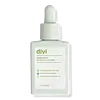What's inside
What's inside
 Key Ingredients
Key Ingredients

 Benefits
Benefits

 Concerns
Concerns

 Ingredients Side-by-side
Ingredients Side-by-side

Water
Skin ConditioningGlycerin
HumectantAlcohol Denat.
AntimicrobialLactobacillus/Portulaca Oleracea Ferment Extract
AntioxidantPanthenol
Skin ConditioningSorbitol
HumectantArginine
MaskingPhenoxyethanol
PreservativeDisodium Phosphate
BufferingCarbomer
Emulsion StabilisingSodium Lactate
BufferingSodium PCA
HumectantXanthan Gum
EmulsifyingCitric Acid
BufferingDisodium Adenosine Triphosphate
Skin ConditioningCaffeine
Skin ConditioningSodium Hyaluronate
HumectantPterocarpus Marsupium Bark Extract
Ethylhexylglycerin
Skin ConditioningAlgin
MaskingCarica Papaya Fruit Extract
Skin ConditioningSodium Hydroxide
BufferingPhytic Acid
Alcohol
AntimicrobialBiosaccharide Gum-1
HumectantDisodium Succinate
MaskingLeuconostoc/Radish Root Ferment Filtrate
AntimicrobialTris(Tetramethylhydroxypiperidinol)Citrate
StabilisingPantolactone
HumectantGlutamic Acid
HumectantSodium Benzoate
MaskingFructose
HumectantGlycine
BufferingInositol
HumectantLactic Acid
BufferingNiacinamide
SmoothingUrea
BufferingWater, Glycerin, Alcohol Denat., Lactobacillus/Portulaca Oleracea Ferment Extract, Panthenol, Sorbitol, Arginine, Phenoxyethanol, Disodium Phosphate, Carbomer, Sodium Lactate, Sodium PCA, Xanthan Gum, Citric Acid, Disodium Adenosine Triphosphate, Caffeine, Sodium Hyaluronate, Pterocarpus Marsupium Bark Extract, Ethylhexylglycerin, Algin, Carica Papaya Fruit Extract, Sodium Hydroxide, Phytic Acid, Alcohol, Biosaccharide Gum-1, Disodium Succinate, Leuconostoc/Radish Root Ferment Filtrate, Tris(Tetramethylhydroxypiperidinol)Citrate, Pantolactone, Glutamic Acid, Sodium Benzoate, Fructose, Glycine, Inositol, Lactic Acid, Niacinamide, Urea
Water
Skin ConditioningGlycerin
HumectantMelaleuca Alternifolia Leaf Oil
AntioxidantAcetyl Tetrapeptide-3
Skin ProtectingCopper Tripeptide-1
Skin ConditioningCaffeine
Skin ConditioningSodium PCA
HumectantSodium Lactate
BufferingArginine
MaskingHyaluronic Acid
HumectantAspartic Acid
MaskingPCA
HumectantBiotin
AntiseborrhoeicGlycine
BufferingAlanine
MaskingMentha Piperita Oil
MaskingEucalyptus Globulus Oil
Serine
MaskingMenthol
MaskingTocopherol
AntioxidantValine
MaskingProline
Skin ConditioningThreonine
Isoleucine
Skin ConditioningRosmarinus Officinalis Leaf Extract
AntimicrobialCamellia Sinensis Leaf Extract
AntimicrobialHistidine
HumectantPhenylalanine
MaskingCopper Gluconate
Skin ConditioningAscorbic Acid
AntioxidantPhenylpropanol
MaskingEthylhexylglycerin
Skin ConditioningWater, Glycerin, Melaleuca Alternifolia Leaf Oil, Acetyl Tetrapeptide-3, Copper Tripeptide-1, Caffeine, Sodium PCA, Sodium Lactate, Arginine, Hyaluronic Acid, Aspartic Acid, PCA, Biotin, Glycine, Alanine, Mentha Piperita Oil, Eucalyptus Globulus Oil, Serine, Menthol, Tocopherol, Valine, Proline, Threonine, Isoleucine, Rosmarinus Officinalis Leaf Extract, Camellia Sinensis Leaf Extract, Histidine, Phenylalanine, Copper Gluconate, Ascorbic Acid, Phenylpropanol, Ethylhexylglycerin
Ingredients Explained
These ingredients are found in both products.
Ingredients higher up in an ingredient list are typically present in a larger amount.
Arginine is an amino acid that is important for human development. Your body uses is it to produce hair keratin and skin collagen.
As a cosmetic ingredient, Arginine has antioxidant properties and can also help repair damaged skin. This ingredient is derived either synthetically or from animals.
Arginine isn't fungal acne safe when used in the presence of other lipids (fats, fatty acids, oils, esters, etc). Oils and fats occur naturally within the skin, so take caution when using Arginine if you're prone to fungal acne.
Learn more about ArginineCaffeine is most associated with coffee, tea, and cacao. In skincare, it helps with calming inflammation and is rich in antioxidants.
While caffeine is used to treat cellulite and and dark circles, further studies are needed to prove this. It has been believed to help with these skin conditions due to its ability to dilate blood vessels and increase blood flow.
Some studies are looking into caffeine's ability to protect against UV rays.
Learn more about CaffeineEthylhexylglycerin (we can't pronounce this either) is commonly used as a preservative and skin softener. It is derived from glyceryl.
You might see Ethylhexylglycerin often paired with other preservatives such as phenoxyethanol. Ethylhexylglycerin has been found to increase the effectiveness of these other preservatives.
Glycerin is already naturally found in your skin. It helps moisturize and protect your skin.
A study from 2016 found glycerin to be more effective as a humectant than AHAs and hyaluronic acid.
As a humectant, it helps the skin stay hydrated by pulling moisture to your skin. The low molecular weight of glycerin allows it to pull moisture into the deeper layers of your skin.
Hydrated skin improves your skin barrier; Your skin barrier helps protect against irritants and bacteria.
Glycerin has also been found to have antimicrobial and antiviral properties. Due to these properties, glycerin is often used in wound and burn treatments.
In cosmetics, glycerin is usually derived from plants such as soybean or palm. However, it can also be sourced from animals, such as tallow or animal fat.
This ingredient is organic, colorless, odorless, and non-toxic.
Glycerin is the name for this ingredient in American English. British English uses Glycerol/Glycerine.
Learn more about GlycerinThis ingredient is an amino acid that helps build proteins and moisturizes skin. It is already present in our skin as our bodies produce them naturally.
Glycine already plays a role in helping keep our skin moisturized as amino acids transport moisture throughout our skin.
As collagen is made up of glycine and other amino acids, it is believed glycine may help our skin produce more collagen.
Learn more about GlycineSodium Lactate is the sodium salt of lactic acid, an AHA. It is a humectant and sometimes used to adjust the pH of a product.
This ingredient is part of our skin's NMF, or natural moisturizing factor. Our NMF is essential for the hydration of our top skin layers and plasticity of skin. NMF also influences our skin's natural acid mantle and pH, which protects our skin from harmful bacteria.
High percentages of Sodium Lactate can have an exfoliating effect.
Fun fact: Sodium Lactate is produced from fermented sugar.
Learn more about Sodium LactateSodium PCA is the sodium salt of pyroglutamic acid. It is naturally occurring in our skin's natural moisturizing factors where it works to maintain hydration.
The PCA stands for pyrrolidone carboxylic acid, a natural amino acid derivative.
This ingredient has skin conditioning, anti-inflammatory, and humectant properties. Humectants help hydrate your skin by drawing moisture from the air. This helps keep your skin moisturized.
Learn more about Sodium PCAWater. It's the most common cosmetic ingredient of all. You'll usually see it at the top of ingredient lists, meaning that it makes up the largest part of the product.
So why is it so popular? Water most often acts as a solvent - this means that it helps dissolve other ingredients into the formulation.
You'll also recognize water as that liquid we all need to stay alive. If you see this, drink a glass of water. Stay hydrated!
Learn more about Water